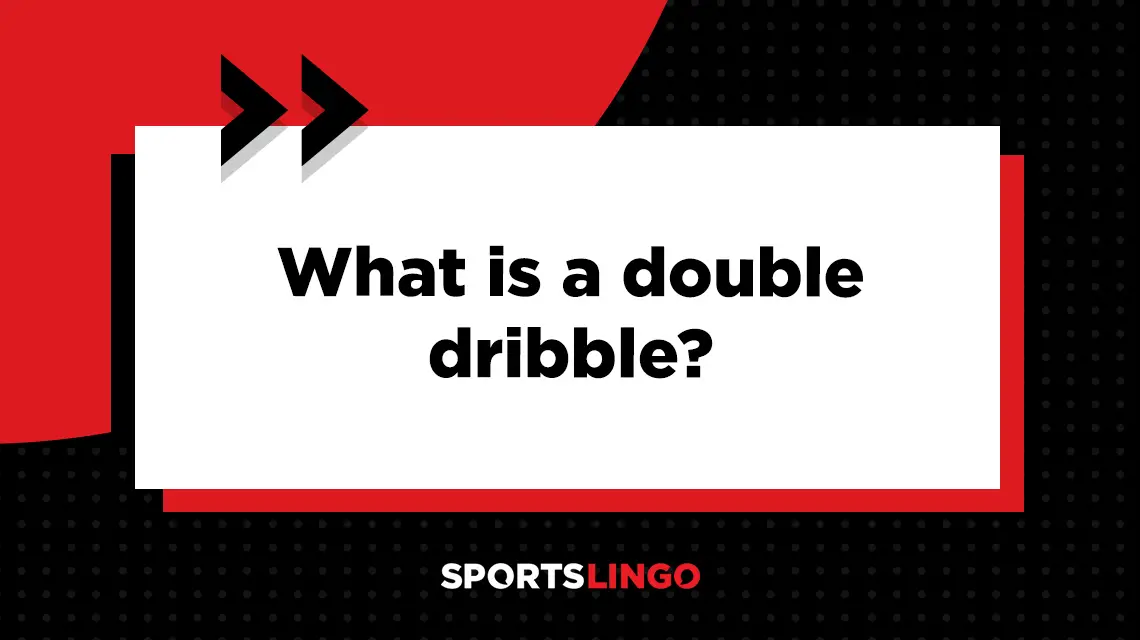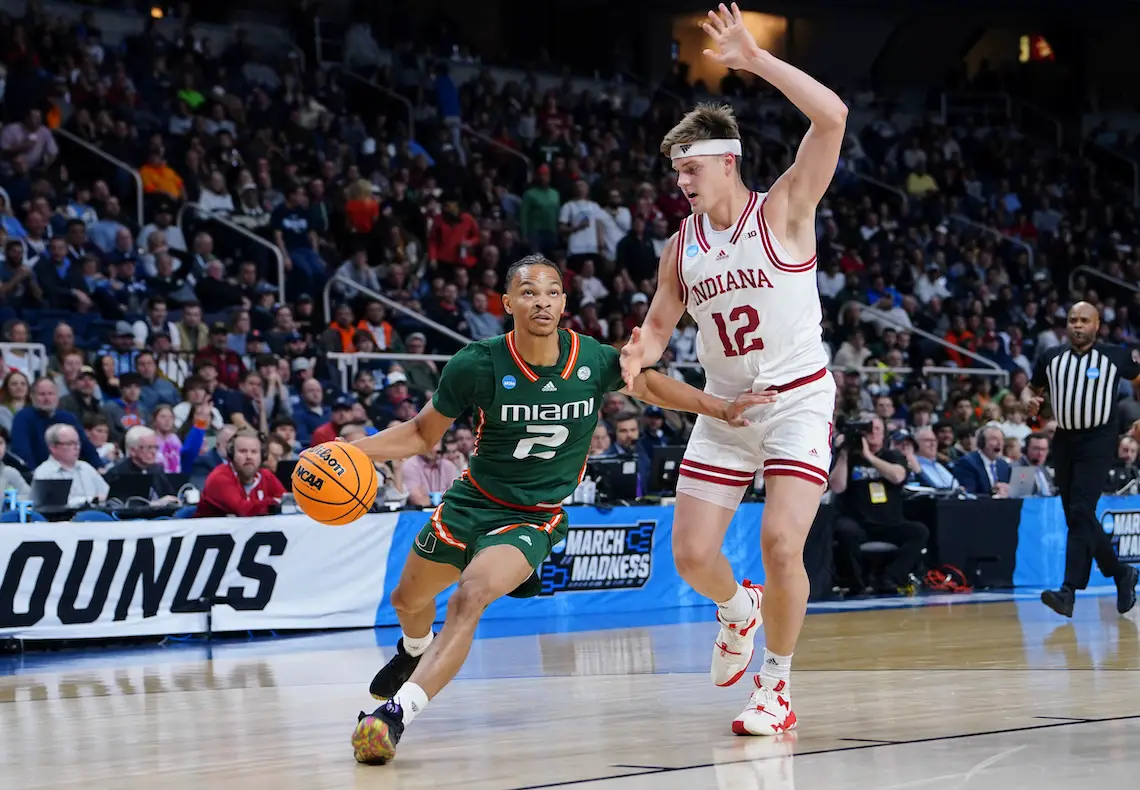
dou*ble drib*ble
What is the definition of double dribble in basketball?
1. A double dribble is a violation in basketball when a player dribbles the ball again after they have already stopped and picked up their dribble. Another form of double dribble is when the player dribbles the ball with both hands at the same time.
If a player commits a double dribble violation, the ball is awarded to the other team who then must take the ball out of bounds at the location of the infraction.
What is the double dribble rule?
The double dribble rule is often one of the first fundamentals of the sport that young players learn. The same double dribble rule applies across all leagues, including the National Basketball Association (NBA), Women’s National Basketball Association (WNBA), International Basketball Federation (FIBA), National Collegiate Athletic Association (NCAA) and high school basketball.
Types of double dribbles
There are two types of double dribbles which can occur in a basketball game:
Dribbling again after stopping
Once a player stops their dribble, they may not begin dribbling again. At that point, they must pass or shoot the ball, or an opposing player may steal the ball from them. If they do dribble again after stopping, they will violate the double dribble rule.
Dribbling with two hands
Players may only dribble with one hand at a time. The ball can be dribbled by either hand, but both hands cannot touch the ball simultaneously while dribbling. If a player dribbles with both hands, they will incur a double dribble violation.
Exceptions to the double dribble rule
There are a few scenarios where players are exempt from the double dribble rule:
Brief loss of possession
If the ball is knocked out of a player’s hands after they stop dribbling, they can begin dribbling again without committing a double dribble violation.
Taking a shot
Similarly, if the player takes a shot but the ball does not go in the basket, they can grab the rebound and begin dribbling again without violating the double dribble rule. In the NBA, the shot must touch the backboard or the basket hoop before the player can dribble again.
Fumbling the ball
If a player tries to catch the ball off a rebound or pass but accidentally fumbles it, it does not count as a dribble even though the ball already touched their hands. They can still grab the ball and begin dribbling after this occurs.
Power dribble
A power dribble is another exception to the illegal dribble rule. A player is permitted to slam the ball down with both hands after receiving a pass in the lane. This is typically done to secure their stance and push back defending players in an effort to post up.

What are the penalties for a double dribble?
If a double dribble violation occurs, it results in a turnover. Possession of the ball goes to the opposing team, which is awarded an inbounds pass from the sideline nearest to the spot of the violation.
What are some consequences of double dribbling?
Because a double dribble results in a turnover, it stops a team from advancing toward their frontcourt and potentially scoring a field goal. The opposing team also receives an inbounds pass at the sideline, which assists them in defending their goal and attempting to score.
Why is double dribbling not allowed?
Double dribbling is one of the basketball rules which help to keep gameplay moving. It discourages one player from maintaining possession of the ball for an excessive amount of time. In addition, the double dribble rule also encourages ball movement between basketball players.
What is a double dribble an example of?
A double dribble is an example of a dribbling violation. Other types of dribbling violations that break essential basketball rules include:
- Traveling: A traveling violation occurs when a player is possession of the ball moves without dribbling. Traveling is sometimes known as walking in basketball.
- Carrying: Also known as palming, a carrying violation occurs when a dribbling player allows the ball to come to a rest in their hand momentarily.
Are double dribbling and traveling the same?
Double dribbling and traveling violations are both types of dribbling violations. However, they are not the same thing.
Double dribbling involves how a player handles the ball. Specifically, it involves either dribbling again after they have already stopped and picked up their dribble, or dribbling the ball with both hands at the same time.
Traveling, on the other hand, involves how a player moves their feet. It occurs when a player in possession of the ball moves their feet without dribbling. A traveling violation occurs if they do one of the following things:
- Move their pivot foot
- Take three or more steps when not dribbling the ball
Traveling violations may occur when a player receives a pass from a teammate, collects a rebound, or picks up their dribble. The penalty for traveling is a turnover to the opposing team.
Are double dribbling and carrying the same?
Carrying is not the same thing as double dribbling, but the two basketball rule violations are very similar.
When a player carries or “palms” the basketball, they temporarily stop dribbling as the ball comes to a rest in their hand. If they continue to dribble a second time after doing this, it is similar to a double dribble violation.
Interestingly, carrying can also be similar to traveling. If the ball comes to a rest in the player’s palm and they are still in motion while carrying it, it is comparable to traveling.
The penalty for carrying the ball is a turnover to the opposing team. Players can avoid this infraction by keeping their hand toward the top of the ball while dribbling.
Examples of how double dribble is used in commentary
1. Responding to a tough full-court press, Russell stops, gives the defender a ball fake and dribbles again. He’s quickly called for double dribble, resulting in a turnover for the Los Angeles Lakers during a critical playoff game.
2. After the jump ball, George speeds down the court with the ball, but a double dribble violation near the free throw line stops him from going for the slam dunk.
SportsLingo goes the extra-inch with the meaning of double dribble
There is still some confusion among players, primarily younger ones, on what exactly is considered double dribbling.
According to NBA basketball rules, a player gives up their dribble when:
- A player touches the ball simultaneously with both hands.
- A player touches the ball more than once before it touches the ground. For example, if the ball exchanges hands in mid-air before falling back to the ground.
- The ball comes to a rest in the player’s hand while they are in possession of the ball.
If a player commits any of the three scenarios above, then begins dribbling again, then they have committed a double dribble violation.
Sport the term is used
1. Basketball
Also known as:
1. Illegal dribble
2. Dribbling violation